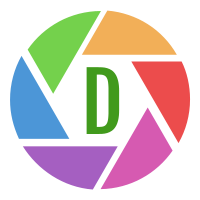Facebook algorithms look at over 200 signals to enable campaign optimizations at scale. Facebook Limited learning happens when the constraints put on the algorithm are restrictive.
How does Facebook algorithm enable campaign optimizations?
When a new campaign or an ad set is launched, Facebook’s algorithm undergoes a learning phase where it assesses over 200 signals including signals relevant to audience interacting with the ads. This learning phase is supposed to enable this algorithm to identify the most important signals that can help the campaign/ad set exceed expectations. Once this signal is identified, the campaign/ad set emerges out of the learning phase.
How long does the learning phase last?
Facebook algorithm needs about 50 conversion actions to happen within a week for it to have assimilated all the required learning to help your campaign scale. Your campaign objective, budget provided as well as the targeting criteria provided will determine how long the learning phase will last. However, as a rule of thumb, the learning phase should not last for more than 3 weeks and that is long.
What should you be very careful about during the learning phase?
During the algorithm’s learning phase it is essential that you do not make any significant changes because it can trigger the algorithm to go back into learning phase. If the algorithm goes back into learning phase, then all previous learning are negated and the learning starts again from scratch. So, refrain from making changes to campaign objective, budgets, targeting criteria unless you are sure that the re-learning is worth it.
What should you do if your ad set has been in learning phase for a long time?
If your adset has been in learning phase for more than a few weeks, then consider the below approaches to get out of it:
- Does your adset have enough budget for the objective/KPI chosen?
Your ad set needs to have sufficient budget to drive 50 conversions each week.
For example: If your ad set is optimizing towards credit card application submission, then ensure that the weekly budget is atleast 20% greater than 50*cost per application. If I knew that cost per application submission is $100, I would ensure that the weekly budget is about 50*$100*1.2 = $6000
- Can you deliver 50 events per week that the algorithm needs?
If the required 50 events cannot be delivered, then consider using a different. Below is a hack to enable the algorithms to still work smartly towards your final goal:
For Example: If you do not get more than 50 credit card applications in a week, then consider firing FB conversion pixel on pages that appear before the thank you page. So, if your credit card application has 4 pages till the thank you page, then consider page 4 or page 3 as the conversion event for your ad set. If based on your web analytics data, you know that these pages receive way more than 50 visits per week, then use them as the conversion event for your ad set
- Is your targeting criteria too restrictive?
If your targeting criteria is too restrictive, algorithm will not work. If your targeting criteria restricts the audience size to <100,000, it is too restrictive. However, restricted targeting criteria work great if you are very sure of your niche audience and you have the right product/creative for them. If that is not the case, then refrain from making your targeting criteria too restrictive. Facebook recommends an audience size of 1Million for its algorithm to learn effectively and emerge out of learning phase.
Finally, algorithms require an initial training data set to understand the key traits that lead to a specific action. The good thing about facebook’s algorithm is that tends to stop spending if the specific objectives cannot be met. So, while you will end up saving on inefficient spend, you will be left with budget and unmet results if you do not take care of limited learning challenge.
Now, read about how do you enable facebook algorithm to work well.








